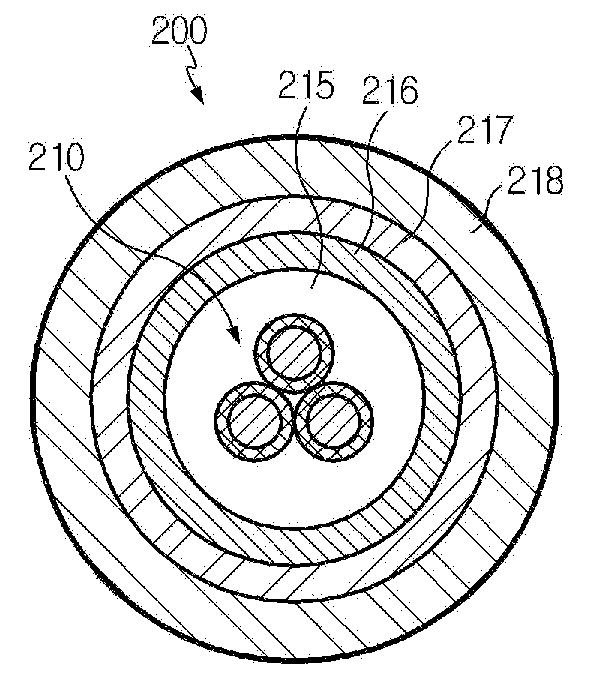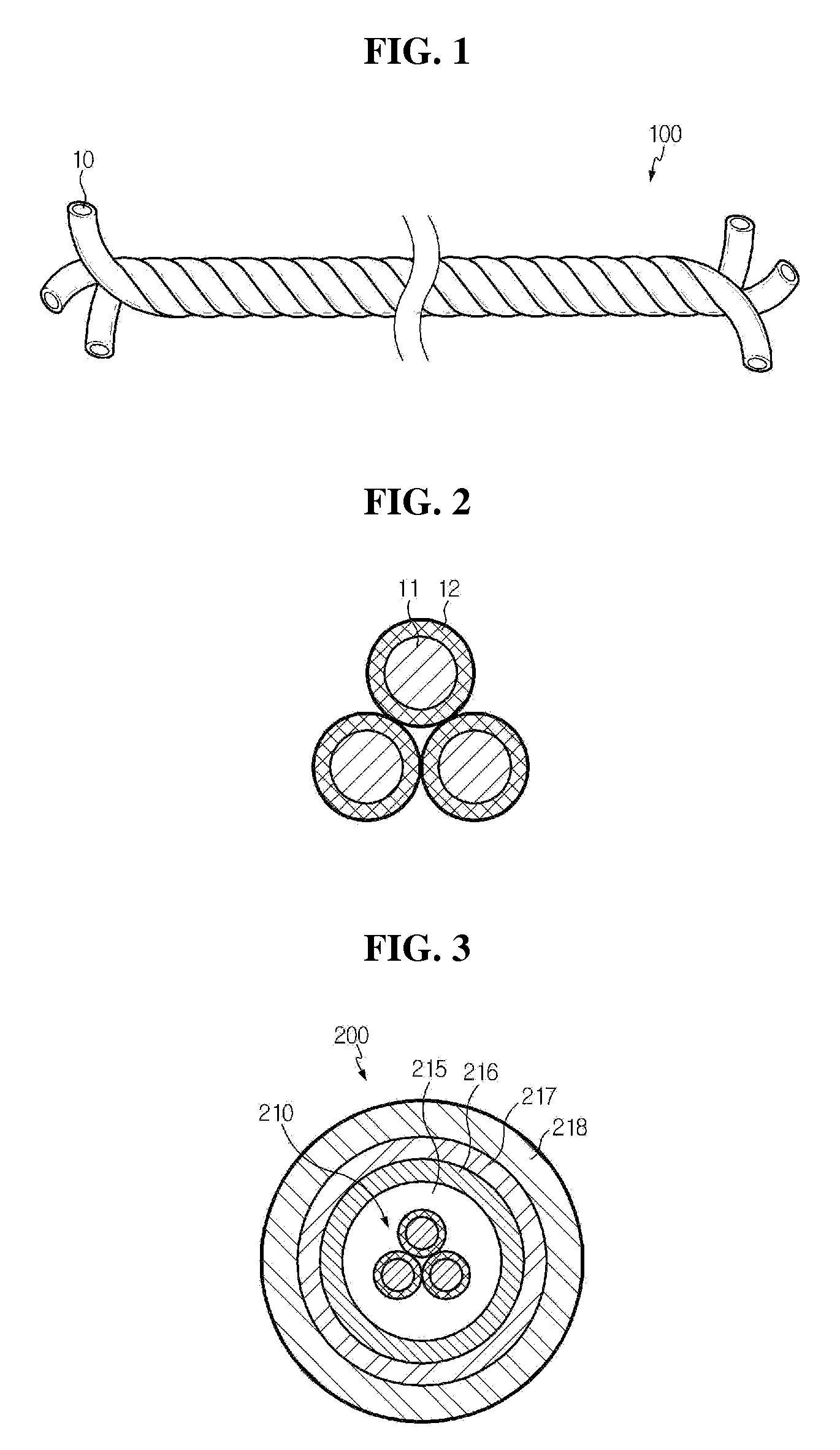Anode for secondary battery and secondary battery having the same
a secondary battery and anode technology, applied in the field of anodes, can solve the problems of short circuit, short circuit, and the inability to develop various shapes of mobile devices, and achieve the effects of improving surface area, facilitating lithium ion diffusion, and good battery performan
- Summary
- Abstract
- Description
- Claims
- Application Information
AI Technical Summary
Benefits of technology
Problems solved by technology
Method used
Image
Examples
experimental example
[0051]
[0052]A lithium foil was used as a cathode and each of the anodes prepared in Example 1 and Comparative Examples 1 and 2 was used as an anode, and a polyethylene separator was interposed between the cathode and the anode, to obtain an electrode assembly. The electrode assembly was inserted in a battery case, to which an electrolyte solution containing 1M LiPF6 dissolved in a mixed solvent of ethylene carbonate and diethyl carbonate (1:2 (volume ratio)) was introduced, to prepare a coin-type half-cell battery.
[0053]
[0054]Each battery using each anode prepared in Example 1 and Comparative Examples 1 and 2 was charged with a constant current of 0.1 C up to 5 mV and then with a constant voltage of 5 mV, and the charging process for each battery was completed when the charging current reached 0.005 C. Each battery was discharged with a constant current of 0.1 C up to 1.5 V. The charging / discharging was repeated 30 times under the same conditions, and then the capacity of each batte...
PUM
| Property | Measurement | Unit |
|---|---|---|
| thickness | aaaaa | aaaaa |
| diameter | aaaaa | aaaaa |
| Thickness | aaaaa | aaaaa |
Abstract
Description
Claims
Application Information
 Login to View More
Login to View More - R&D
- Intellectual Property
- Life Sciences
- Materials
- Tech Scout
- Unparalleled Data Quality
- Higher Quality Content
- 60% Fewer Hallucinations
Browse by: Latest US Patents, China's latest patents, Technical Efficacy Thesaurus, Application Domain, Technology Topic, Popular Technical Reports.
© 2025 PatSnap. All rights reserved.Legal|Privacy policy|Modern Slavery Act Transparency Statement|Sitemap|About US| Contact US: help@patsnap.com



